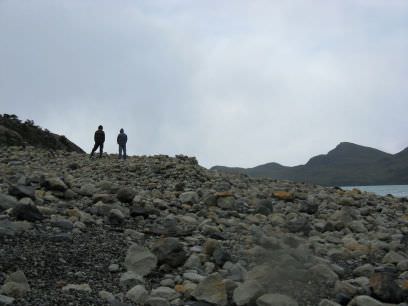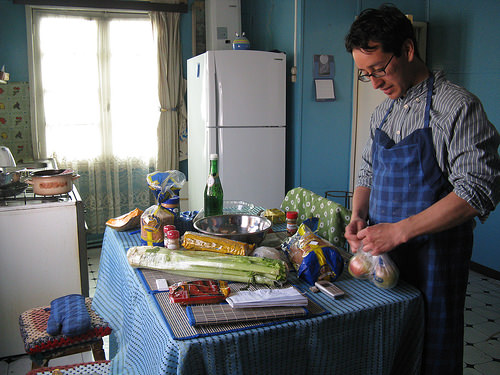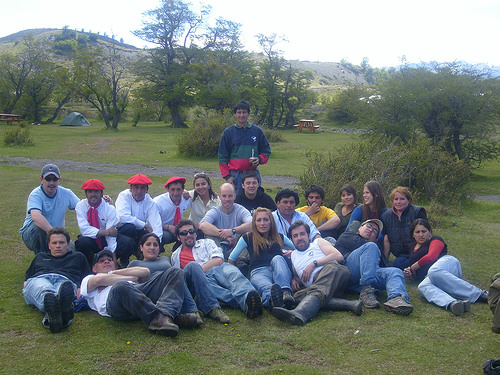I did not break out in hives today, as was expected. I survived a 2.5-hour horseback ride without any symptoms that would tempt me to shove an Epinepherine pin into my thigh. My throat didn’t itch, my eyes didn’t run. I didn’t even sneeze more than the normal amount.
I joined Christian on a journey from home base to Refugio Cuernos, the hiker hostel 12 km east of here. His purpose was to entertain a business consultant; my purpose was to see the refugio in order to write about it later; and the purpose of the pair who shuttled us there and back was to re-supply the refugio with two cases of Cabernet Sauvignon, six cases of juice mix and two cases of hot chocolate.
To get there, we took a Zodiac boat across Lake Nordenskjold, whose water is the color of the weathered, translucent Coke bottle pieces you find on the beach sometimes. The rocky hills on the opposite shore, muted gray figures, stood out starkly against the white, raining sky. It was a cold trip, and I couldn’t effectively tighten the drawstring to my raincoat hood with my glove shells on, but that didn’t matter. The scenery was beautiful.

We took our boots off in the front entryway of Refugio Cuernos and padded inside to dry off by the wood-burning stove. The refugio employees served us a hot lunch — bread, a bowl of bean, pasta and sausage stew and tea to finish — and we — rather, they — talked business. I listened in and out and nodded some.

Afterward, one of our shuttlers decided the water was too choppy for a safe return via Zodiac. While a few hombres returned to Las Torres for horses, I learned how to play the Chilean card game Quince with Ricardo, a refugio employee on his day off, and another refugio guest. (Should I blame the language barrier on my inability to add to 15?) Though I was never clear on how to score the game, I think I ended up winning.

I was pretty happy to get the horse named Gata (Cat) and not the one named Sin Corazón (Without Heart). As you might guess, I am no expert at riding on horseback, but during our ride home, I gained a great appreciation for horse judgment. ‘You think your hoof will hold on this wet rock? ... Okaaaaay....’ We were always fine.
After I grew accustomed to the feel of the horse body below me, I began to enjoy the ride, which took us over rolling, rocky terrain through Nothofagus forests (I think it’s basically deciduous beech). It snowed some, it rained. We forded a couple of rivers of glacial runoff. I rode a cantering horse without screaming.
The view of Lake Nordenskold to our right, the gray hills on its opposite shore and the snow-capped Andes Mountains in the distance, basking in the only sunlight anywhere, was absolutely stunning.
While I imagine most of my working days won’t be as spectacular and will probably consist of sitting in an office in front of a computer, I can only hope for exceptions like today.

 I owe the chance to live and work in Chile to the foot on this statue. I touched it three years ago when I was here, and guess what? I’m back.
According to legend, travelers that touch — or kiss — the toe of the Ona man on the statue in Punta Arenas’ central plaza will someday return to Patagonia. The statue was commissioned by wool baron José Menéndez in 1920 to commemorate the 400th anniversary of Portuguese navigator Hernando de Magallanes’ discovery of the Strait of Magellan.
I owe the chance to live and work in Chile to the foot on this statue. I touched it three years ago when I was here, and guess what? I’m back.
According to legend, travelers that touch — or kiss — the toe of the Ona man on the statue in Punta Arenas’ central plaza will someday return to Patagonia. The statue was commissioned by wool baron José Menéndez in 1920 to commemorate the 400th anniversary of Portuguese navigator Hernando de Magallanes’ discovery of the Strait of Magellan.











